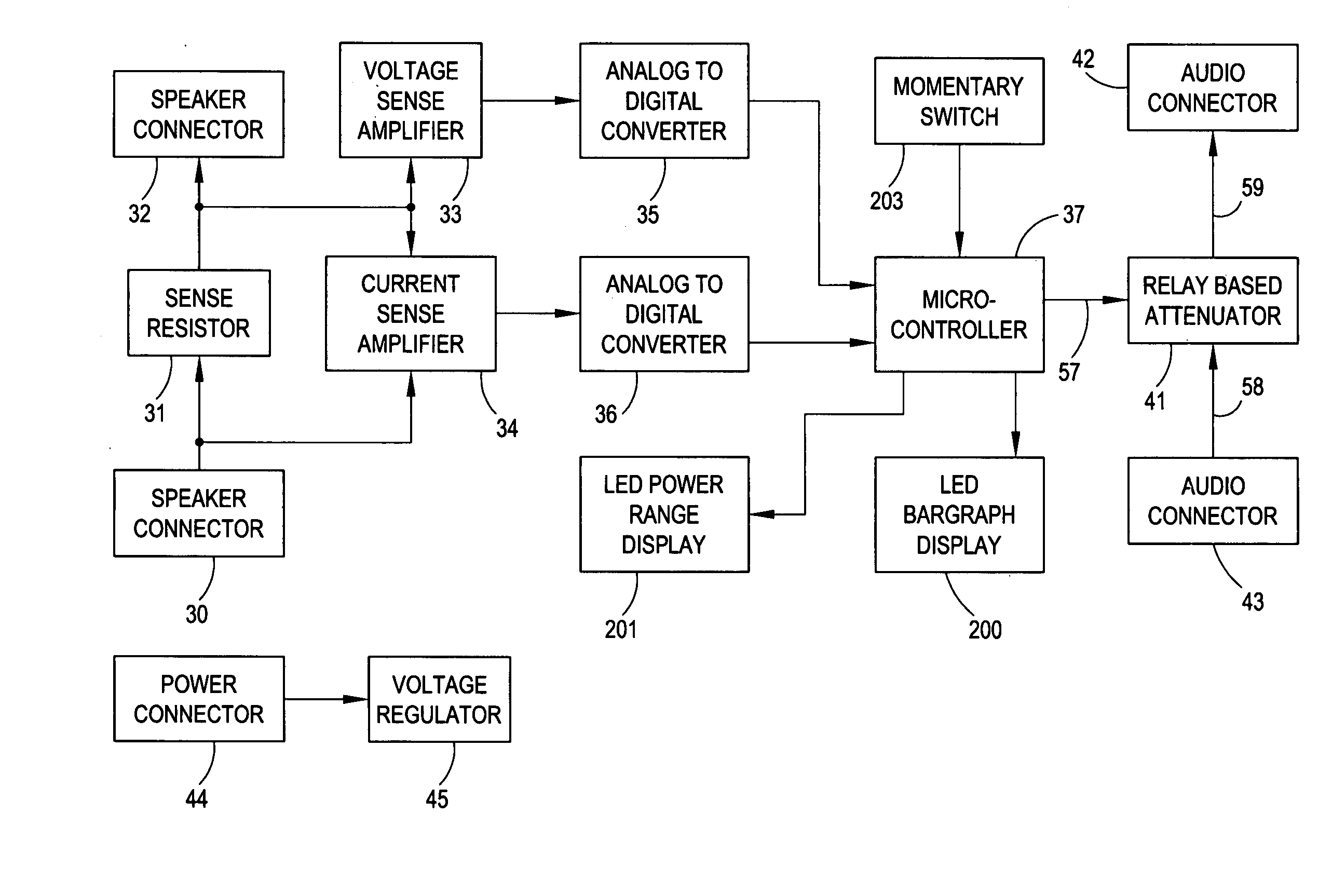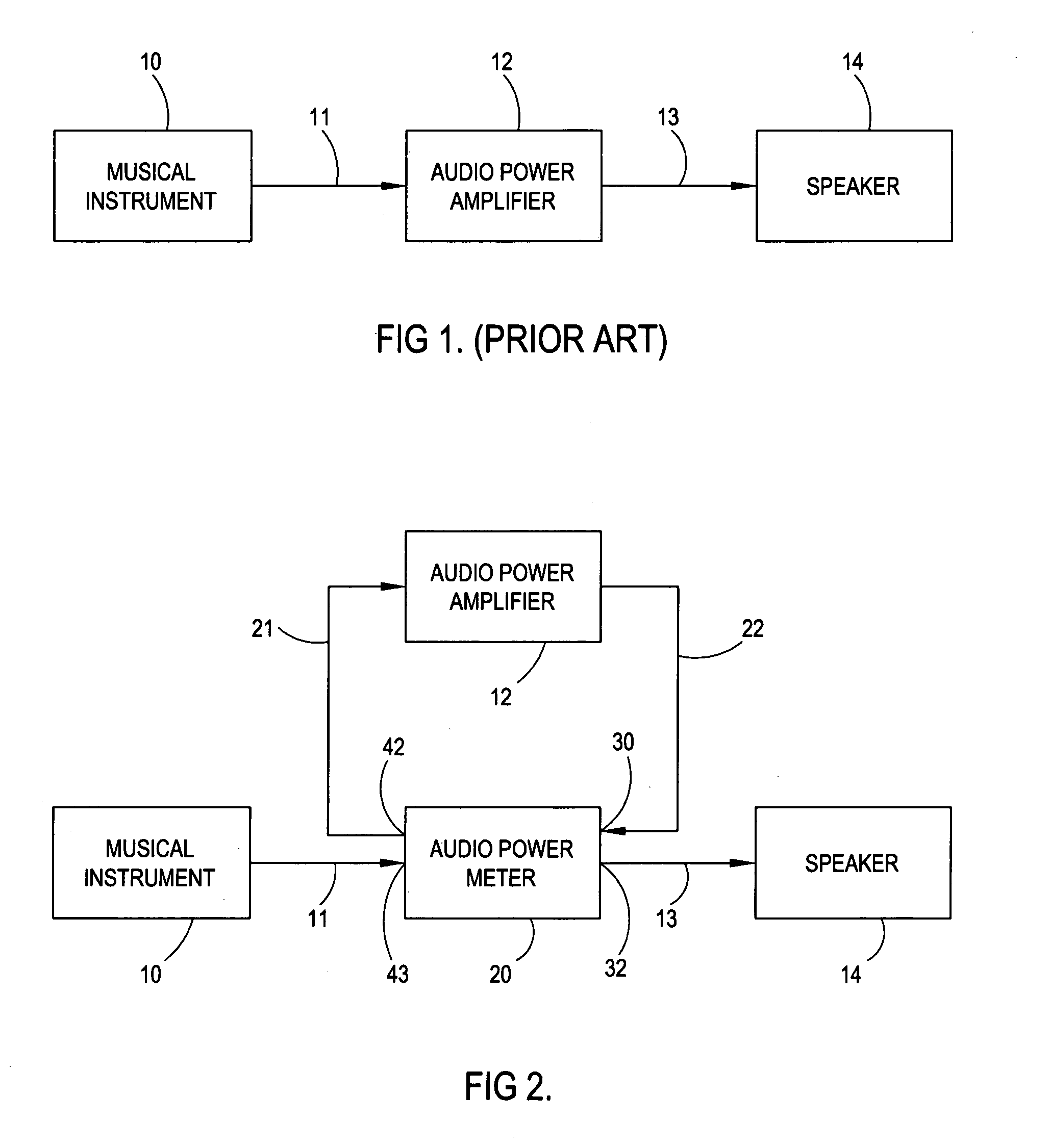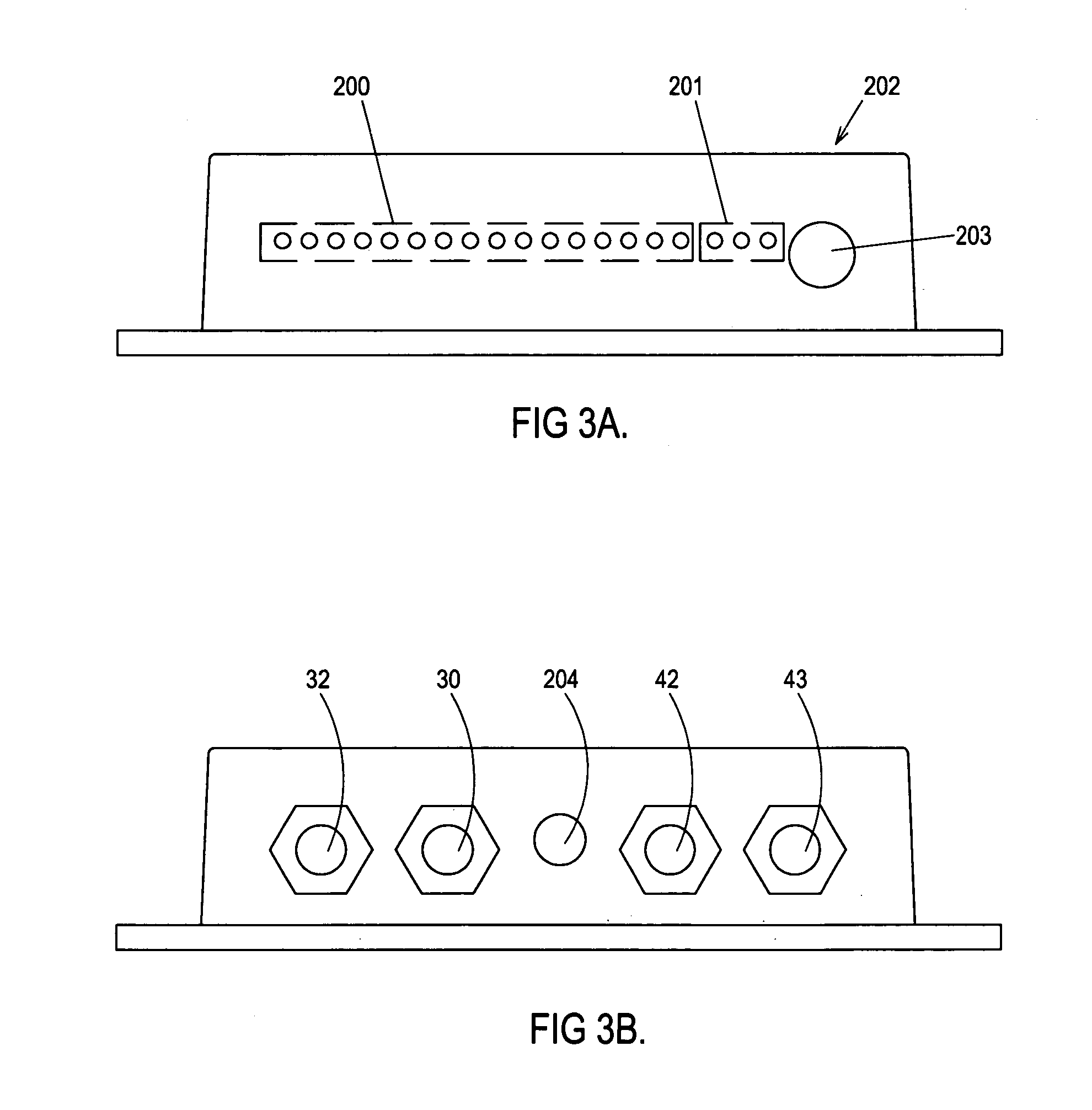Audio power meter
- Summary
- Abstract
- Description
- Claims
- Application Information
AI Technical Summary
Benefits of technology
Problems solved by technology
Method used
Image
Examples
embodiment
Preferred Embodiment
[0090] The functions of the APM are presented in two embodiments, without prejudice against other embodiments carrying functions as claimed. The preferred embodiment (shown in FIG. 3A, front view, and FIG. 3B, rear view) is powered from the AC power mains using an inexpensive conventional wall transformer, and is preferred because musicians generally avoid the use of batteries due to the cost of frequent replacement and the probability of unexpected battery exhaustion. This embodiment can be rack mounted with an additional bracket (not shown), or set on an amplifier or speaker cabinet, or screwed to an equipment carrying case.
[0091] Referring to FIG. 3B, the APM is powered all the while the power cord is plugged in to the power jack 204. Power switching is typically provided by the musician as part of his equipment setup.
[0092] Connections to the APM are made through ¼ inch phone jacks, 30, 32, 42, and 43. The functions and connections of these jacks are descri...
PUM
 Login to View More
Login to View More Abstract
Description
Claims
Application Information
 Login to View More
Login to View More - R&D
- Intellectual Property
- Life Sciences
- Materials
- Tech Scout
- Unparalleled Data Quality
- Higher Quality Content
- 60% Fewer Hallucinations
Browse by: Latest US Patents, China's latest patents, Technical Efficacy Thesaurus, Application Domain, Technology Topic, Popular Technical Reports.
© 2025 PatSnap. All rights reserved.Legal|Privacy policy|Modern Slavery Act Transparency Statement|Sitemap|About US| Contact US: help@patsnap.com



